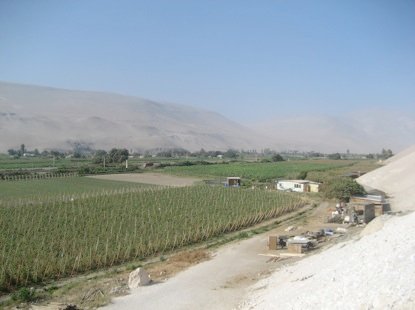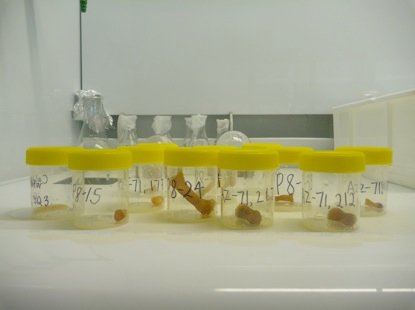In July 2010 the Flinders University Archaeology Department (through Dr Michael Westaway), in collaboration with the University of Tarapacá, the Centro de Investigaciones del Hombre en el Desierto, and Christopher Carter of the Australian National University, conducted an advanced archaeology field school at Caleta Vitor in northern Chile, South America. Through this field school a number of archaeological bone samples (both human and animal) were collected for stable carbon and nitrogen isotope analysis in order to provide an independent source of information on past human diet.

Agriculture in the Azapa Valley
It was after this field school that I was able to volunteer my time to work with Dr Amy Roberts and Professor Donald Pate, and learn through practical experience, how to conduct stable carbon and nitrogen isotope analyses of bone collagen. Through this work, and from learning the preparation techniques for isotope analysis, an opportunity arose for this Masters project to take place examining other collections of human bones from two archaeological sites in this region: the site of Az-71, in the Azapa Valley of northern Chile and the site of Pica-8 in the Tarapacá region of northern Chile.

Bone samples during the chemical preparation process

Map showing the locations of the AZ-71 and Pica-8 sites. Map courtesy of Google Maps.
In archaeological contexts, isotope analysis has focused on the reconstruction of diets of past populations, using stable carbon and nitrogen isotope analysis of bone collagen. My thesis explored questions about the dietary, cultural and technological changes at two northern Chilean sites: the site of Azapa 71 (Az-71) in the Azapa Valley, and the site of Pica-8, in the Tarapacá region. I looked at issues relating to human diet and landscape use in these regions as well as the reliance, or otherwise, on marine foods and/or agriculture. I further investigated the potential of this information to inform our understanding of the degree of inter-regional social interaction between populations in the Chilean region. Interestingly, I found that my results challenge the archaeology, which to date has potentially over-represented the use of both wild and farmed plant foods by these populations.
Overall, this research project was an excellent experience that gave me insight into archaeological practices and materials from an international source. I was also able to go from reading about bioarchaeology and bone chemistry to working with these materials, which I would not have normally had access to in Australia.

